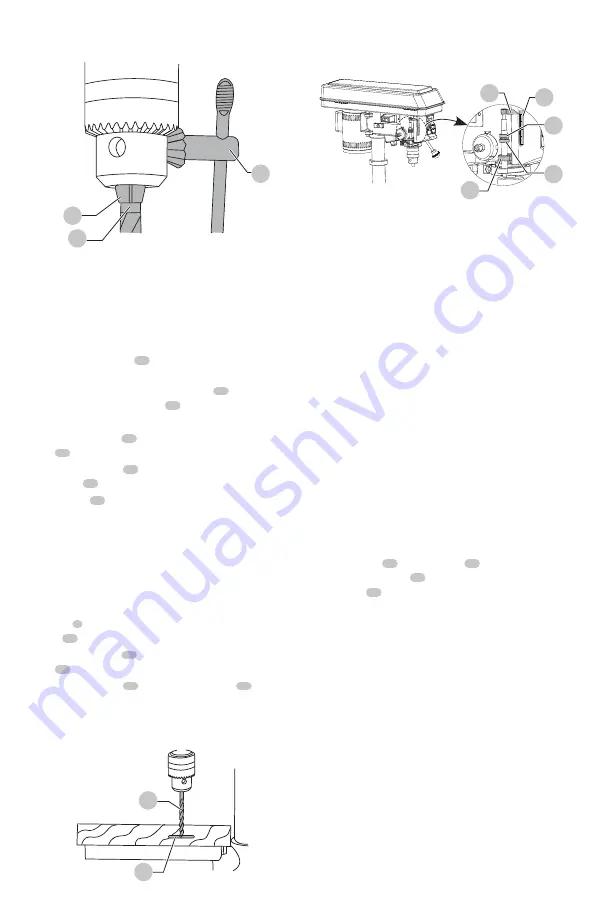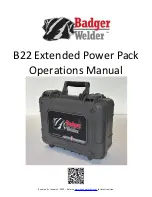
English
14
Drilling To a Specific Depth
Drilling a blind hole (not all the way through workpiece) to
a given depth can be done two ways:
Workpiece Method (Fig. Y, Z)
1. Make the depth mark
55
of the hole on the side of the
workpiece.
2. With the switch “OFF”, bring the drill bit
54
down until
the tip is even with the mark
55
.
3. Hold the feed handle at this position.
4. Spin the lower nut
56
down to contact the depth stop
lug
57
.
5. Spin the upper nut
58
down and tighten against the
lower nut
56
.
6. The drill bit
54
now will stop after traveling the
distance marked on the workpiece.
Depth Scale Method (Fig. Z)
nOTE:
With the chuck in the upper position, the tip of
the drill bit must be just slightly above the top of the
workpiece.
1. With the switch “OFF”, turn the feed handle until the
pointer
1
points to the desired depth on the depth
scale
59
and hold the feed handle in that position.
2. Spin the lower nut
56
down to contact the depth stop
lug
57
.
3. Spin the upper nut
58
against the lower nut
56
and
tighten.
4. The drill bit will stop after traveling the distance selected
on the depth scale.
Fig. X
53
54
37
Drill a Hole
Using a centre punch or a sharp nail, make an indentation
in the workpiece where you want to drill. Turn the power
switch on and pull down on the feed handles with only
enough effort to allow the drill to cut.
FEEDING TOO RAPIDLY might cause the belt or drill to slip,
tear the workpiece loose, or break the drill bit. When drilling
metal, it will be necessary to lubricate the tip of the drill bit
with metal drilling oil to prevent it from overheating.
Basic Operation Instructions
To get the best results and minimize the likelihood of
personal injury, follow these instructions for operating your
drill press.
WARNING:
For your own safety, always observe the
SAFETY INSTRUCTIONS
listed on pages 4 and 5 of
this instruction manual when operating the drill press.
Positioning The Table And Workpiece
(Fig. AA, BB)
1. Lock the table
20
to the column
19
at a position so
the tip of the drill bit
54
is just above the top of the
workpiece
60
.
2. ALWAYS place a BACK-UP MATERIAL (scrap wood)
on the table beneath the workpiece. This will prevent
splintering or heavy burring on the underside of the
workpiece. To keep the back-up material from spinning,
it MUST be positioned against the LEFT side of the
column.
WARNING:
To prevent the workpiece or backup
material from being thrown while drilling, you
MUST
position the workpiece against the
LEFT
side of the
column. If the workpiece or the backup material is not
long enough to reach the column, clamp them to the
table, or use the fence provided with the drill press to
brace the workpiece. Failure to secure the workpiece
could result in personal injury.
3. For a small piece that cannot be clamped to the table,
use a drill press vise (optional accessory).
WARNING:
When using a drill press vise, it
MUST
be
clamped or bolted to the table to avoid injury from a
spinning workpiece, or damaged vise or bit parts.
Fig. Z
Fig. Y
55
54
59
1
58
56
57






































